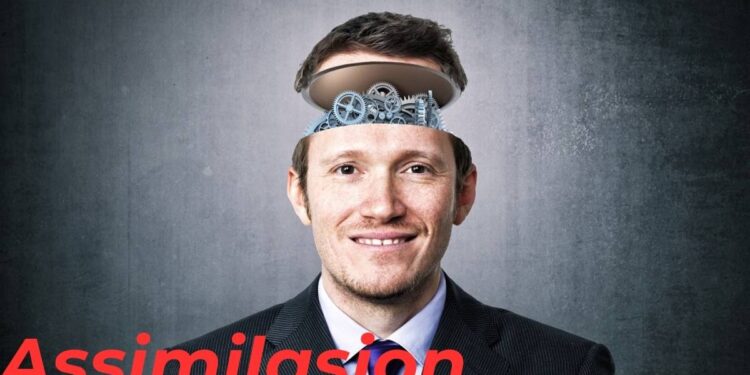Assimilasjon, often translated as assimilation in English, is one of the most significant processes in cultural and social studies. It refers to the way individuals or groups gradually adopt the customs, language, behaviors, and social patterns of a different, often dominant, culture. The concept has deep historical roots, especially in discussions surrounding immigration, nation-building, and cultural identity. In today’s globalized world, assimilasjon is not merely a theoretical framework but an everyday reality that millions of people experience as they move across borders, interact with different communities, and adapt to new ways of life. The debate around assimilasjon often raises questions about identity, belonging, equality, and cultural preservation, making it a topic of both academic and social importance.
Historical Context of Assimilasjon
The idea of assimilasjon has existed for centuries. In ancient empires such as Rome, conquered peoples were often expected to assimilate by learning the Latin language, adopting Roman laws, and participating in Roman cultural practices. During the era of colonialism, assimi asjon was frequently used as a tool of dominance, where indigenous populations were pressured to abandon their native traditions in favor of European customs and languages. The industrial age and mass migrations to countries like the United States, Canada, and parts of Europe further amplified the role of assi milasjon in shaping national identities.
For immigrants, assimilasjon was often framed as a requirement for social mobility and acceptance, while critics saw it as a mechanism for cultural erasure. Understanding this history is crucial to grasp how assimil asjon has influenced modern societies and continues to shape debates about diversity and inclusion.
Theories of Assimilasjon
Several scholars have tried to define and explain the mechanisms of assimilasjon. One of the most influential thinkers was Milton Gordon, an American sociologist who, in the 1960s, proposed a seven-stage theory of assimilation. His stages included cultural assimilation, structural assimilation, marital assimilation, and identification assimilation, among others. According to Gordon, assimilation was not a single event but a multi-step process in which immigrants or minority groups gradually integrate into the host society. Other theorists have argued for models of integration that allow for cultural pluralism, where assimilation is not total absorption but rather adaptation alongside preservation of identity.
differing theories illustrate that assimilas jon is not a uniform experience; it can vary depending on context, power dynamics, and the willingness of both dominant and minority groups to engage with one another.
Cultural Assimilasjon and Identity
Cultural assimilasjon often begins with the adoption of language, clothing styles, food habits, and social customs of the host society. For many individuals, learning the dominant language is the first step in gaining access to education, employment, and civic participation. Yet, this process also raises complex questions about identity. When a person or community adopts the culture of another, what happens to their original identity? Some argue that assimil asjon can lead to a loss of cultural heritage, traditions, and a sense of belonging to one’s ancestral roots.
believe that assimilasjon is a necessary adaptation that allows individuals to thrive in new environments. This tension highlights the dual nature of assimil asjon as both an opportunity for growth and a challenge to cultural continuity.
Social Integration and Assimilasjon
Beyond cultural elements, assimilasjon also plays a critical role in social integration. It influences how individuals interact with institutions, build relationships, and participate in civic life. For example, in many Western societies, successful assimilation often means participating in democratic processes, adopting local norms of behavior, and forming cross-cultural friendships and marriages. Social integration through assimil asjon can create cohesion and reduce social tensions, yet it can also reinforce hierarchies if minority groups feel forced to abandon their uniqueness to gain acceptance. This raises important ethical questions about whether true integration requires uniformity or whether societies can flourish through pluralism.
Challenges and Criticisms of Assimilasjon
While assimilasjon can foster unity, it also faces significant criticism. One major challenge is that it often assumes the superiority of the dominant culture, thereby placing minority groups in a position of disadvantage. This can lead to feelings of exclusion, alienation, or pressure to conform. Moreover, assimilasjon can sometimes become a political tool used to suppress cultural diversity and enforce a single national identity. Critics argue that such approaches undermine the richness of multicultural societies and diminish the value of heritage preservation. Another challenge is the generational divide: while first-generation immigrants may cling to traditional values, their children often assimilate more quickly, leading to family tensions and cultural gaps. These complexities make assimilasjon a nuanced and sometimes controversial process.
Assimilasjon in a Globalized World
Globalization has transformed the way we think about assimilasjon. In the past, assimilation often implied moving from one cultural context to another and permanently adapting to the new culture. Today, with digital communication, international travel, and transnational communities, people often maintain strong connections to their heritage while simultaneously adopting aspects of other cultures. This phenomenon has given rise to concepts like “hybrid identity” and “cultural fusion,” where assimilation is not total absorption but an ongoing negotiation between cultures. Globalization has also increased awareness of the need for cultural sensitivity and inclusion, challenging older models of forced assimil asjon.
Case Studies of Assimilasjon
Real-world examples illustrate the diverse outcomes of assimi lasjon. In the United States, immigrant groups from Europe in the early 20th century, such as Italians and Irish, underwent a gradual process of assimilation that eventually led to their acceptance as part of mainstream society. In contrast, many indigenous groups around the world were subjected to forced assimilation policies, such as residential schools in Canada, which sought to eliminate native languages and traditions. These examples highlight the dual potential of assimilas jon: it can be either empowering or destructive, depending on how it is pursued. Modern policies in many countries now emphasize integration over assimilation, promoting diversity while encouraging participation in a shared civic framework.
Milton Gordon’s work remains foundational in understanding assimilasjon. His framework provided a systematic way to analyze how immigrants adapt to host societies, and his theories continue to influence sociological and policy discussions today.
The Future of Assimilasjon
Looking ahead, the future of assimilasjon will likely be shaped by the tension between globalization and nationalism. On one hand, interconnected societies encourage blending and cross-cultural exchange. On the other, many nations are experiencing a resurgence of nationalism that demands conformity and stricter cultural assimilation. The key question for the future is whether societies will embrace models of integration that respect cultural diversity or revert to assimilationist pressures that demand cultural uniformity. The evolution of assimi lasjon will continue to reflect broader struggles over identity, belonging, and coexistence in an increasingly interconnected yet divided world.
Frequently Asked Questions (FAQ)
1. What does the term assimilasjon mean?
- Assimilasjon refers to the process by which individuals or groups adopt the cultural traits and social patterns of another community, often the dominant one.
2. How is assimilasjon different from integration?
- Assimilasjon often implies full adoption of the dominant culture, while integration allows individuals to participate in society without losing their cultural heritage.
3. Why is language important in assimilasjon?
- Language is often the first and most critical step in assimilasjon, as it enables communication, education, employment, and civic participation.
4. What are the main criticisms of assimilasjon?
- Critics argue that assimilasjon can lead to cultural erasure, reinforce inequalities, and place undue pressure on minority groups to abandon their identities.
5. Who was Milton Gordon and why is he important?
- Milton Gordon was an American sociologist who developed the seven-stage theory of assimilation, providing one of the most influential frameworks for understanding the process.


















